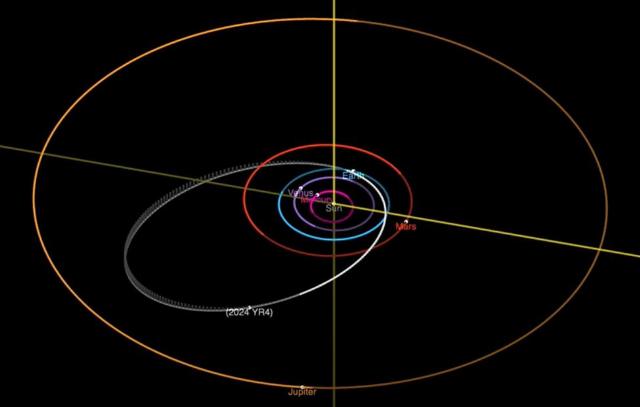The initiative may cause damage to near-Earth spacecraft, explained Sergey Yazev, senior researcher at the Institute of Solar-Terrestrial Physics of the Siberian Branch of the Russian Academy of Sciences.
MOSCOW, September 26. /tass/. The UN Security Council and the IAEA should assess the consequences of the idea of nuclear detonation of the asteroid 2024 YR4 proposed by some scientists, as such an initiative would violate the current ban on the deployment of nuclear weapons in space and could damage near-Earth spacecraft. This opinion was expressed to TASS by Sergey Yazev, senior researcher at the Institute of Solar-Terrestrial Physics of the Siberian Branch of the Russian Academy of Sciences, professor at Irkutsk State University (IGU).
Earlier, an article was published on the arxiv platform in which an international group of scientists is considering two ways to avoid a possible collision of the asteroid 2024 YR4 with the Moon in 2032. Experts suggest either changing the asteroid's orbit, or destroying it with a kinetic impact or nuclear explosion. The final decision is proposed to be made at the end of 2028, when the space object will approach the Earth.
"More than half a century ago, a project for a nuclear explosion on the moon was proposed - fortunately, it was not implemented. So far, no one is going to put a nuclear munition on a space rocket in practice, but as we can see, such ideas are emerging. The main consequence of this experience will be a violation of the rules so far observed - not to launch nuclear weapons into space. I think that such projects should be implemented solely by decision of the UN Security Council and be as open as possible to control by international organizations such as the IAEA, otherwise this will lead to a sharp decrease in the overall level of mutual trust and international security," the researcher told TASS.
Threat to near-Earth vehicles
Speaking about the technical side of the proposed nuclear strike on an asteroid, the astronomer pointed out that even an explosion of a satellite weighing several hundred kilograms creates space debris that can damage existing spacecraft. The explosion of an asteroid weighing about 230,000 tons will have much more serious consequences.
"It is extremely important at what distance from the Earth the asteroid will be intercepted. Of course, a significant part of the substance will evaporate during the explosion, but at the same time there will be many tiny fragments that will end up in chaotic orbits and will move at high speed. They can pose a serious danger to spacecraft in lunar and near-Earth orbits. Here it is necessary to carefully model the consequences," the researcher continued.
Yazev stressed that the asteroid threat to Earth is not an invention, therefore it is necessary to learn how to counter it in practice. However, new approaches must be tested with the utmost care and responsibility, "otherwise the harm from such an experiment may exceed the benefit," he concluded.
Asteroid 2024 YR4 was discovered in late December 2024 by one of the Atlas telescopes operating in Chile. Its diameter, according to preliminary calculations, ranges from 40 to 90 m. Scientists suggest that the object may collide with the moon in December 2032.

